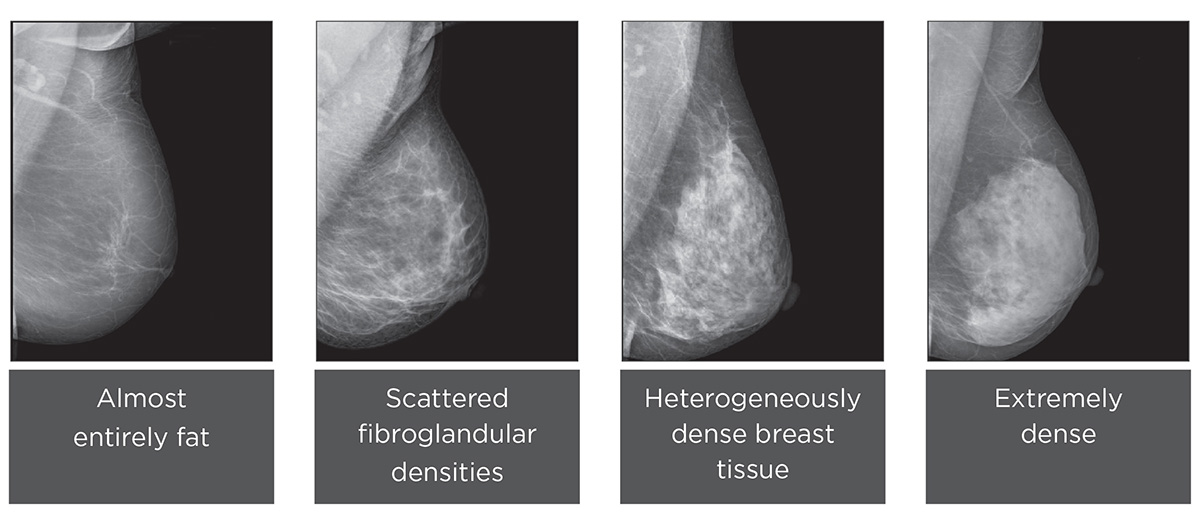What is breast density?
Breast density refers to the appearance of breast tissue on a mammogram. Breast tissue is composed of fibrous, glandular and fatty tissue. Your breasts are considered dense if your mammogram shows more fibrous or glandular tissue and less fatty tissue.
How do I know if I have dense breasts?
Dense breast tissue is common and is seen in approximately 50% of women. Breast density isn’t based on size, firmness, or how they feel, it can only be determined by a mammogram. Density may decrease with age although some women have dense breasts at any age.
Breast density is determined by the radiologist who reads your mammogram. There are four categories of density:
A. Almost entirely fat
B. Scattered fibroglandular densities
C. Heterogeneously dense breast tissue
D. Extremely dense
If the radiologist classifies your tissue as you as C or D you are considered to have dense breasts. Your breast density can be found on your mammogram report and your result letter will notify you if your breasts are considered dense.

Why is breast density important?
Having dense breast tissue may increase the risk for developing breast cancer. Mammograms may be less accurate in these women because dense breast tissue and cancer both appear white making cancer more difficult to detect on a mammogram.
What should I do if I have dense breast tissue?
Every woman over 40 should get an annual screening mammogram. Mammography remains the only test proven to reduce breast cancer mortality. Most breast cancers will be detected on a mammogram, including women with dense breasts. Studies have shown supplemental screening exams beneficial for finding cancers not visible on a mammogram. If you have dense breasts please talk to your doctor. Together you can decide which, if any, additional screening exams are right for you.
SUPPLEMENTAL SCREENING
Breast MRI
Studies show this exam to increase breast cancer detection. The American Cancer Society recommends breast MRI for patients with a greater than 20% lifetime risk of breast cancer, such as an intermediate risk (personal history of breast cancer or prior breast biopsy showing atypia).
Screening Breast Ultrasound
The screening breast ultrasound may detect some breast abnormalities that are not visible on routine mammography. It is non-invasive and uses sound waves to create images of the breast.